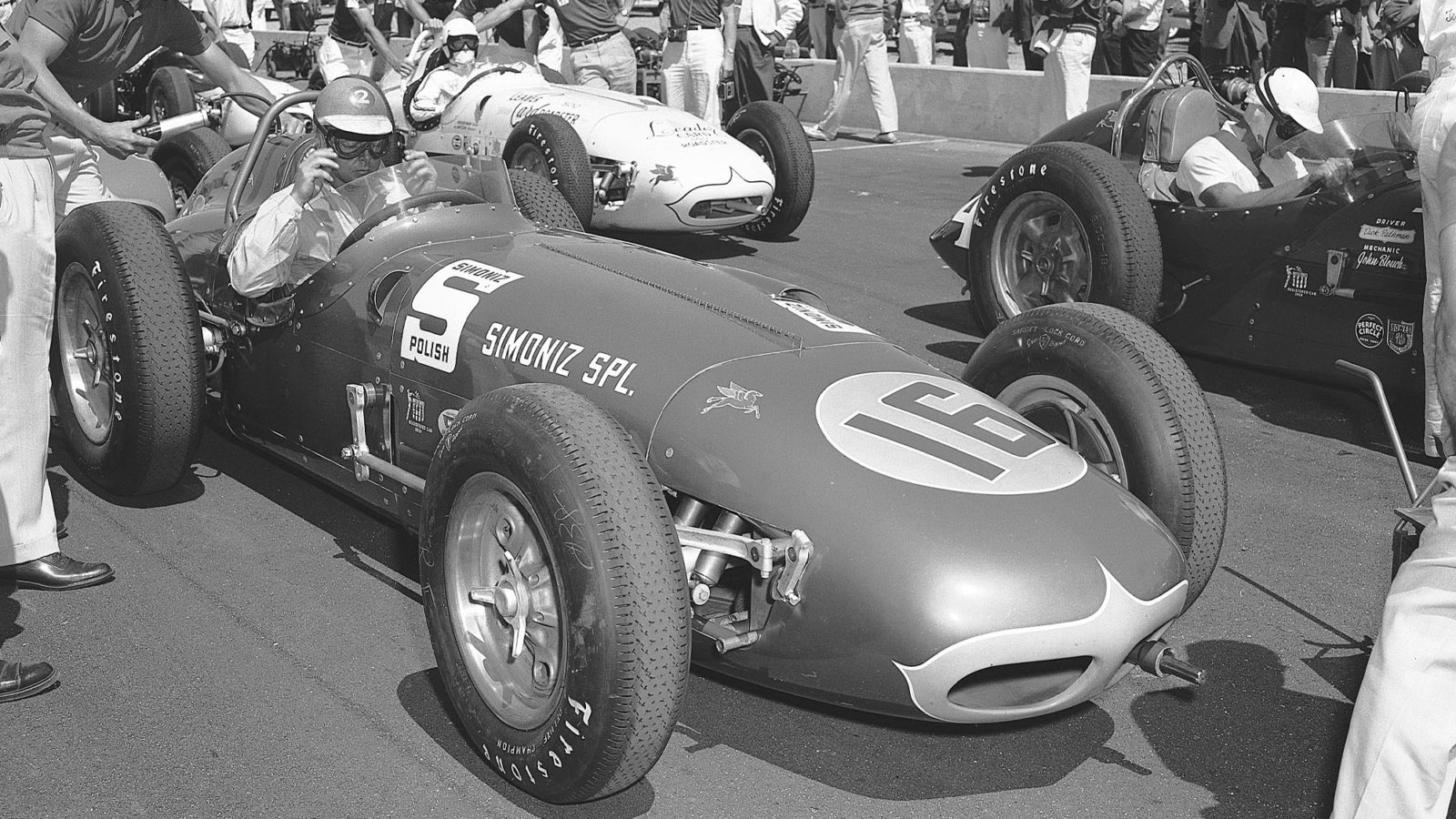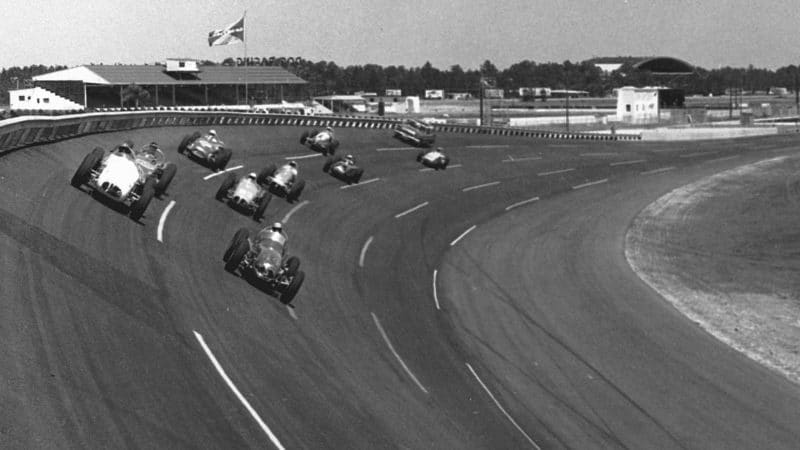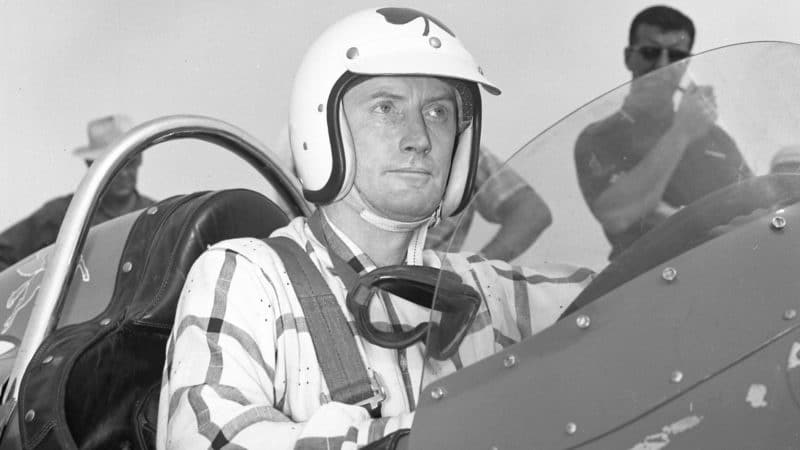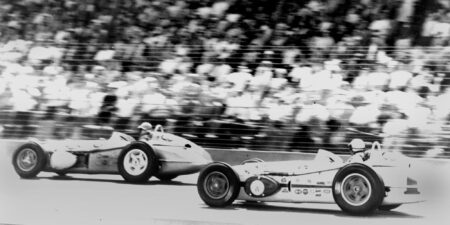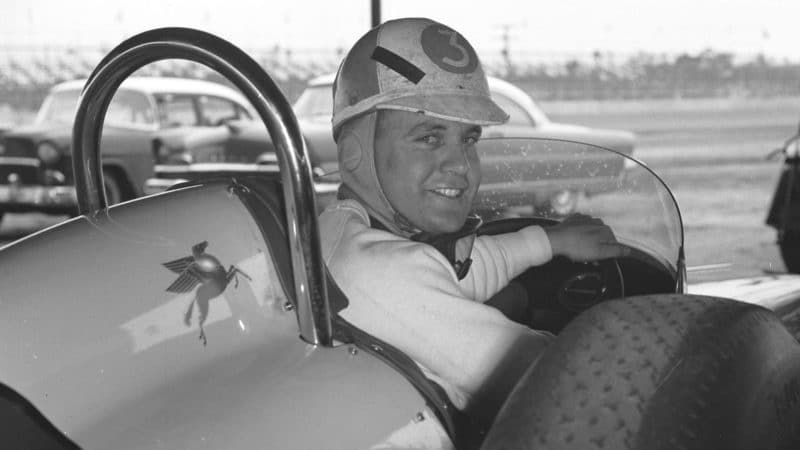Undaunted, USAC returned two months later for what was scheduled to be a 100-mile National Championship event followed by a 100-mile Formula Libre race for sports cars, Formula 1 and Indycars. But practice gave a preview of the uncertainty awaiting the competitors and the effects of speeds no one could imagine back then.
Al Keller, Jerry Unser and Bob Veith all took wild rides and experienced what had to be the first signs of aerodynamics in an Indycar. Keller spun several times down the front straightaway after the rear end of his Central Excavating Kuzma roadster just “lifted off the ground. I had no warning and I was probably doing close to 180mph,” he told eyewitnesses.
“Jerry was in our dirt car and hit a dip in the track and hit the wall real hard,” says AJ Watson of Leader Card fame. “So he was done.”
Veith wound up in hospital with a bum shoulder after crashing down the backstretch and flipping into the infield – but landing on all four wheels. A gust of wind had turned his car sideways.
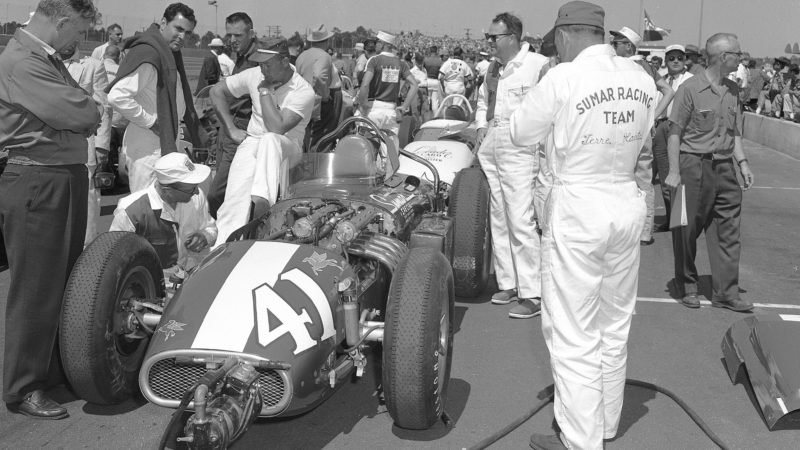
Pole would go to Jim Rathmann’s brother, Dick
ISC Images & Archives via Getty Images
Qualifying was a sight to behold as Amick threw down an incredible lap of 176.887mph and Tony Bettenhausen, who had run 177mph in the Novi in Italy the year before, had practised a tick under 180mph. Pat Flaherty, the 1956 Indy winner, found the pace hard to comprehend: “It’s hard to realise your enormous speed, and it’s exhausting.” Dick Rathmann, elder brother of Jim, who had taken Teague’s place for the Sumar team, stuck his conventional roadster in the show at 173.210mph and said: “There’s nothing I’d rather be doing than driving here.”
Despite his eye-opening speed, Amick didn’t discount the challenge ahead. “Perhaps it takes more experience to drive at Indy, but this course is tough because you don’t get a chance to relax anywhere.”
Then, in what turned out to be an eerily prophetic comment, he added: “If you lose it here, your rump is a grape.”
